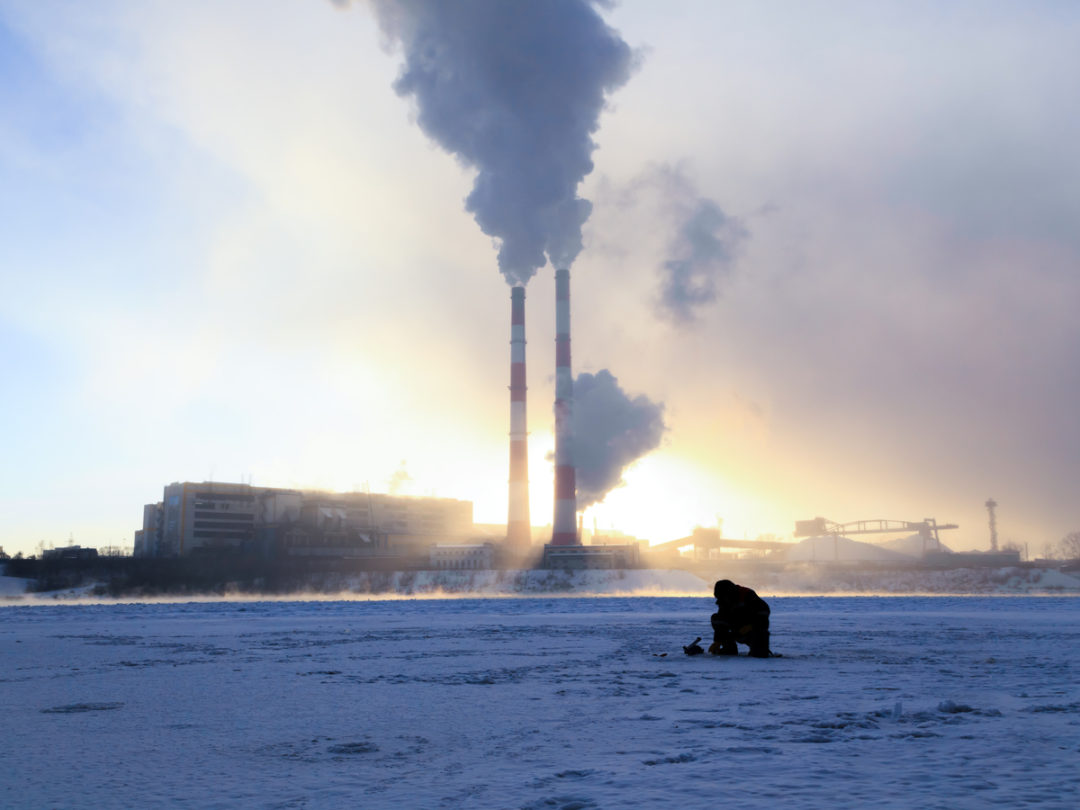
Visit Our Sponsors |
|
|
|
|
|
|
|
|
|
|
|
|
|
|
|
|
|
|
|
|
|
|
|
|
|
|
|
|
|
|
|
|
|
|
|
|
|
|
|
|

The three largest automakers in the U.S. suspended some operations on the coldest day of the year after a fire at a Southeast Michigan natural gas facility drastically reduced their supply of the heating fuel. Energy prices soared as freezing weather spread into the Northeast and closed a nuclear reactor in New Jersey.
CMS Energy Corp.’s Consumers Energy utility sends gas to about 4.1 million people in 45 counties in the region, including much of the auto manufacturing sector, according to its website. The fire occurred in a facility that accounts for about 64 percent of the utility’s gas supply, and company officials were urging all customers — residential, industrial and commercial — to cut back on their use of the fuel.
General Motors Co. and Fiat Chrysler Automobiles NV both idled some of their operations while Ford Motor Co. dialed back gas consumption at four factories. The fire hit a compressor station, and the utility expects to be able to return to normal operations Thursday afternoon and the conservation request will continue through Friday, Katie Carey, a utility spokeswoman, said by telephone.
Temperatures fell to minus-12 Fahrenheit (minus 24 Celsius) in Detroit at 7:39 a.m., with wind-chill values as low as minus-33, according to the National Weather Service. Cotton, Minnesota, was the coldest spot in the country Thursday, at minus-53, according to the National Weather Service, and the weather has been blamed for at least eight deaths so far.
GM got called by the utility late Wednesday asking the automaker to suspend work for a couple of days while the utility makes repairs to the Macomb County facility hit by the fire, and as the utility’s other locations handle increasingly high demand.
Other facilities will be able to supply gas to residents and vital facilities like hospitals, Carey said in an email.
GM idled three vehicle-assembly plants and two stamping factories along with either other facilities, Pat Morrissey, a spokesman for the automaker, said by email today. In addition, GM shut down its Technical Center in Warren, Michigan, where 20,000 hourly and salaried employees work, Morrissey said.
Dialing Back
Ford is dialing back gas usage by lowering the temperature to “minimum levels” in two transmission plants in the Detroit suburbs, Kelli Felker, a company spokeswoman, said by email. The carmaker has also stopped heat treatment at an axle factory, as well as the paint process and parts of its stamping operation at the assembly plant that just started building the revived Ranger pickup.
Fiat Chrysler canceled the first shift and second shifts on Thursday at two assembly plants in suburban Detroit that make its Ram pickup trucks, the company said.
Meanwhile, all generators have been asked by PJM Interconnection LLC, operator of the grid stretching from Chicago to Philadelphia, to check power-plant equipment and fuel supplies to make sure there are no interruptions, Jeff Shields, a spokesman for PJM, said in an interview Wednesday. They’ve also been urged to “bring on extra people, because we need everyone on board,” Shields said.
In New Jersey, icing forced the closure of one of the two nuclear reactors at Public Service Enterprise Group Inc.’s Salem plant, according to the Nuclear Regulatory Commission.
Power in PJM East, a region that includes New Jersey, doubled from Wednesday to $54.71 a megawatt-hour at 11:11 a.m., according to Genscape data. In New York City, power more than quadrupled to $98.58 as temperatures dropped to the single digits.
Gas for delivery in New York Thursday surged 29 percent to $14 per MMBtu. Midwest gas demand surged about 50 percent Wednesday over the previous two days to the highest in BloombergNEF data going back to 2014.Though power and gas prices are getting a boost, the current freeze-out isn’t like the polar vortex of 2014 or the “ bomb cyclone” in January 2018 that dumped snow as far south as Florida and drained fuel supplies, said Adam Jordan, director of power analytics at Genscape. For one, it won’t last as long as those events, and this time grid operators are better prepared to handle temporary freezes.
“This event just won’t last long enough,” Jordan said in an interview. Gas wells and pipelines should continue to deliver supplies and the Northeast has added capacity to import the fuel. “The infrastructure can handle a two- or three-day freeze.”
RELATED CONTENT
RELATED VIDEOS
Timely, incisive articles delivered directly to your inbox.




.jpg?height=100&t=1715228265&width=150)

